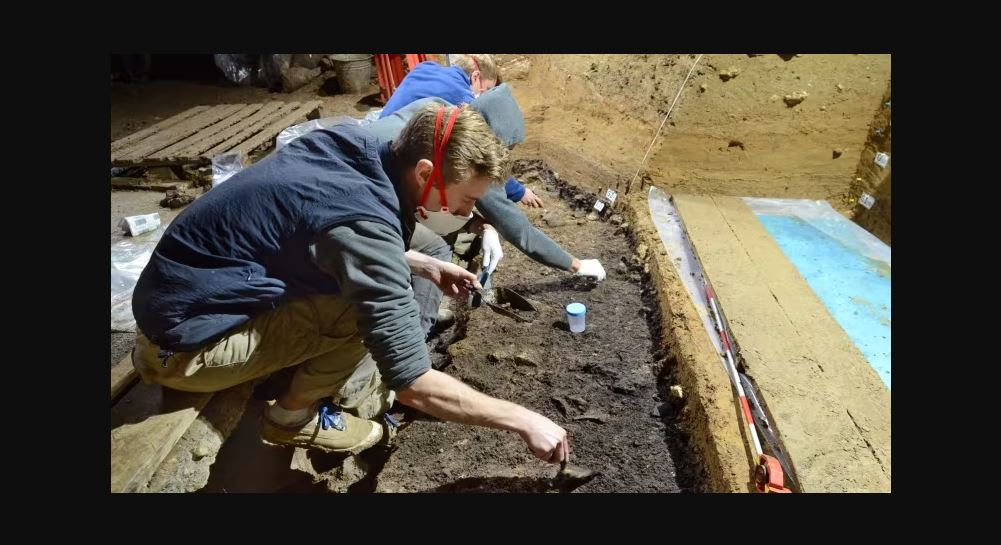Unearthed 45,000-Year-Old Bones Are The Oldest Modern Human Remains In Central Europe
Unearthed 45,000-year-old bones are the oldest modern human remains in Central Europe. New research suggests that modern humans ventured into chilly Northern Europe by crossing the Alps.
Author:Karan EmeryReviewer:Daniel JamesFeb 02, 202411.2K Shares164.9K Views

Unearthed 45,000-year-old bones are the oldest modern human remains in Central Europe. New research suggests that modern humans ventured into chilly Northern Europe by crossing the Alps. This finding indicates that Homo sapiens might have cohabitated with Neanderthals in Europe for a much longer period than previously believed.
The discovery consists of 13 bone fragments belonging to Homo sapiens, uncovered in a cave in Germany, dating back between 44,000 and 47,500 years. These remains represent the oldest known Homo sapiens specimens from Central and Northwest Europe. The researchers were surprised by this discovery, given the frigid climate of the region during that period.
"This shows that even these earlier groups of Homo sapiens dispersing across Eurasia already had some capacity to adapt to such harsh climatic conditions," Sarah Pederzani, an archaeologist at the University of La Laguna in Spain and the Max Planck Institute for Evolutionary Anthropology in Germany who led the paleoclimate study of the site said in a statement.
When Homo sapiens arrived in Europe, they encountered Neanderthals, their closest extinct relatives, who had inhabited the continent for over 200,000 years until their extinction around 40,000 years ago. Previous research indicated that Homo sapiens reached Southwest Europe around 46,000 years ago. The dynamics of interactions between Homo sapiens and Neanderthals during the Middle-to-Upper Paleolithic transition (47,000 to 42,000 years ago) remain a subject of intense debate, including the extent to which Homo sapiens may have influenced the demise of Neanderthals.
To delve into this enigmatic period, researchers conducted three new studies examining artifacts and climate conditions from that era. Their findings, published online on Wednesday (January 31) in the journal Natureand two studies in the journal Nature Ecology & Evolution, shed light on the transitional phase. Previous archaeological digs uncovered a variety of stone tool manufacturing techniques, such as the Lincombian-Ranisian-Jerzmanowician (LRJ) industry, but it was unclear whether Neanderthals or Homo sapiens produced these.
"The Middle Paleolithic in Europe [about 300,000 to 35,000 years ago] is linked with Neanderthals, while the Upper Paleolithic in Europe [about 35,000 to 10,000 years ago] is linked with modern H. sapiens," study co-author Jean-Jacques Hublin, a paleoanthropologist at the Max Planck Institute for Evolutionary Anthropology, said. "The artifacts of the transitional period have sort of mixed features."
In one of the recent studies, researchers investigated artifacts from the Lincombian-Ranisian-Jerzmanowician (LRJ) industry, which included intricately crafted leaf-shaped stone tools found across Northern Europe from Germany to Britain.
The scientists concentrated on examining thousands of bone fragments associated with LRJ artifacts discovered in Ilsenhöhle (Ilse's cave) in Ranis, Germany. They not only conducted new excavations at the site but also reanalyzed remains from the 1930s excavations, now housed in museum collections.
One of the studies revealed that the cave was intermittently used by denning hyenas, hibernating cave bears, and small groups of hominins - likely either Homo sapiens or Neanderthals - who consumed reindeer, woolly rhinoceroses, and horses. However, many bone fragments were too fragmented for visual identification.
Conclusion
Consequently, researchers analyzed proteins and DNA extracted from these fragments to ascertain their origins. Their investigation led to the discovery of 13 bone fragments dating from approximately 44,000 to 47,500 years ago.
Jump to

Karan Emery
Author
Karan Emery, an accomplished researcher and leader in health sciences, biotechnology, and pharmaceuticals, brings over two decades of experience to the table. Holding a Ph.D. in Pharmaceutical Sciences from Stanford University, Karan's credentials underscore her authority in the field.
With a track record of groundbreaking research and numerous peer-reviewed publications in prestigious journals, Karan's expertise is widely recognized in the scientific community.
Her writing style is characterized by its clarity and meticulous attention to detail, making complex scientific concepts accessible to a broad audience. Apart from her professional endeavors, Karan enjoys cooking, learning about different cultures and languages, watching documentaries, and visiting historical landmarks.
Committed to advancing knowledge and improving health outcomes, Karan Emery continues to make significant contributions to the fields of health, biotechnology, and pharmaceuticals.

Daniel James
Reviewer
Daniel James is a distinguished gerontologist, author, and professional coach known for his expertise in health and aging.
With degrees from Georgia Tech and UCLA, including a diploma in gerontology from the University of Boston, Daniel brings over 15 years of experience to his work.
His credentials also include a Professional Coaching Certification, enhancing his credibility in personal development and well-being.
In his free time, Daniel is an avid runner and tennis player, passionate about fitness, wellness, and staying active.
His commitment to improving lives through health education and coaching reflects his passion and dedication in both professional and personal endeavors.
Latest Articles
Popular Articles
